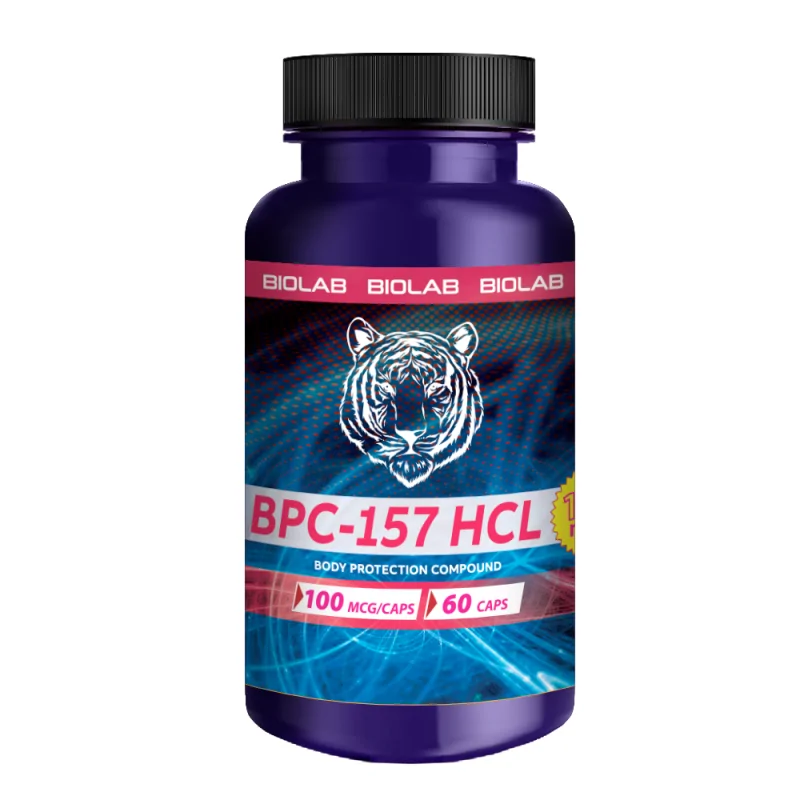
August 27, 2024
Gastric Pentadecapeptide Bpc 157 As An Efficient Therapy For Muscle Mass Crush Injury In The Rat Surgery Today
Brain-gut Axis And Pentadecapeptide Bpc 157: Academic And Useful Implications It's necessary to discuss the benefits and drawbacks with your doctor before selecting the preferred technique of management. BPC-157 can be carried out by mouth, topically, or via subcutaneous shots. While dental management is hassle-free, shots have a tendency to provide even more consistent and dependable results as the peptide is taken in directly into the bloodstream. Your doctor can assist figure out the most ideal management method based on your particular health and wellness objectives and preferences. BPC-157 aids expand new little capillary and protects the internal wall surfaces of capillary.What Are The Recommended Dosages For Bpc-157?
Bpc 157 Peptide Bpc 157 Review, Side Effects, Dosage, Cycles, Before And After Results - Outlook India
Bpc 157 Peptide Bpc 157 Review, Side Effects, Dosage, Cycles, Before And After Results.
Posted: Tue, 08 Aug 2023 07:00:00 GMT [source]
- It was discovered that systemic and splanchnic blood circulation and sensory hepatic circulation were minimized as the intra-abdominal pressure increased; i.e., liver blood circulation lowered by 39% when pneumoperitoneum enhanced from 10 to 15 mmHg and liver ischemic injury took place (Chen et al., 2017).
- Weight management (g) existed as the Δ in between the first and final weight [13,18]
- Each management course provides an one-of-a-kind profile in pharmacokinetics and restorative effects, underpinning the importance of tailored application in making the most of the peptide's restorative capacity.
- With meticulous examination, scientists unveil the potential benefits of BPC-157, critical the extent to which it may transform person care.
- In comparison, the stable stomach pentadecapeptide BPC 157, an arising treatment with possible healing applications, appears to be unlimited by the constraints seen in previous therapies.
Reported Advantages Of Bpc 157:
BPC 157 is a human gastric juice-derived healthy protein that shows robust results on healing and recuperation in rodent pet versions. Via a https://s3.us-east-1.amazonaws.com/pharma-warehousing/patient-compliance/generic-drug-development/introducing-the-power-of-peptides-for-rapid-effective-recuperation-an.html number of systems, BPC 157 has shown its capability to promote outgrowth and fibroblast spreading, generating professional impacts in recovery ligaments, tendons, and muscular tissues. Future studies are still required evaluating the safety and security and efficiency of BPC 157 in people.Bpc-157 Primary Areas Of Study
Together with the "bypassing vital" and swiftly triggered collaterals, Virchow's set of three was constantly minimized, both peripherally and centrally (Vukojevic et al., 2018; Gojkovic et al., 2020; Kolovrat et al., 2020; Gojkovic et al., 2021a; Knezevic et al., 2021a; Knezevic et al., 2021a; Gojkovic et al., 2021b; Knezevic et al., 2021b; Strbe et al., 2021). In particular, BPC 157-induced endothelial maintenance (Sikiric et al., 1994) and the "bypassing vital" (Vukojevic et al., 2018; Gojkovic et al., 2020; Kolovrat et al., 2020; Gojkovic et al., 2021a; Knezevic et al., 2021a; Knezevic et al., 2021a; Gojkovic et al., 2021b; Knezevic et al., 2021b; Strbe et al., 2021) occur in addition to the previously kept in mind BPC 157-NO system communications. This can involve the launch of NO by itself (Sikiric et al., 1997; Turkovic et al., 2004), in addition to conserved NO system function versus NOS blockade (L-NAME) or overfunction (L-arginine) (for testimonial, see Sikiric et al., 2014). Moreover, blood pressure maintenance (Sikiric et al., 1997), preserved thrombocyte function (Stupnisek et al., 2015; Konosic et al., 2019), and vasomotor tone happened with BPC 157-specific activation of the Src-caveolin-1-eNOS pathway (Hsieh et al., 2020). Besides, the "bypassing essential" additionally occurred with small vessel occlusion, revealing a therapeutic result. Nevertheless, BPC-157 did not promote either NIH3T3 or HaCaT cell expansion (information disappointed). HUVECs were exposed to BPC-157 (1 μg/ mL, 5 μg/ mL, and 10 μg/ mL) for 2 days and after that examined by flow cytometry. Outcomes showed that BPC-157 obviously lowered the cell number in the G0/G1 phase in a dose-dependent way compared with the number in the control team (Figure 4B). These findings showed that BPC-157 might regulate the cell viability and affect HUVEC cell cycle exit in the G0/G1 stage. The peptide was prepared, as explained formerly [15-25], with 99% high stress liquid chromatography (HPLC) purity, expressing 1-des-Gly peptide as an impurity. L-NAME (Sigma, USA) and L-arginine (Sigma, United States) were used accordingly [1,5,7,17-19,45 -51] To cure normally serious esophagogastric anastomosis in rats, lacking anastomosis recovery and sphincter feature rescue, in particular. Typical injuries that take place while playing sporting activities or engaging in everyday activities entail damage to the body's soft cells. In calvarial window (top), at 15 minutes increased stress time and medicine saline (5 ml/kg ip) (upper, left, control, a) or BPC 157 (10 ng/kg sc) (top, right, A), at 10 minutes raised intra-abdominal pressure time. After sacrifice (reduced), at the 25 min enhanced intra-abdominal stress time (saline (5 ml/kg ip) (low, left, control, b) or BPC 157 (10 ng/kg sc) (low, ideal, B) at 10 minutes enhanced intra-abdominal pressure time. Noticeable mind swelling in control rats (left), totally reversed in BPC 157 rats (right). An electronic camera connected to a VMS-004 Discovery Deluxe USB microscope (Veho, USA). Rats were laparatomized before sacrifice for the matching presentation of the peripheral vessels (azygos vein, premium mesenteric vein, portal capillary, substandard caval capillary, and abdominal aorta). The recording was done with a cam affixed to a VMS-004 Discovery Deluxe USB microscope (Veho, USA) at the end of the experiment and examined as prior to (Gojkovic et al., 2021a; Knezevic et al., 2021a; Knezevic et al., 2021a; Knezevic et al., 2021b; Strbe et al., 2021).How much time has BPC 157 been about?
The BPC-157 peptide''s history starts with the exploration of the compound by a Croatian scientific group in the early 1990s. Ever since, the restorative possibility of the BPC-157 peptide has been completely explored.


Social Links